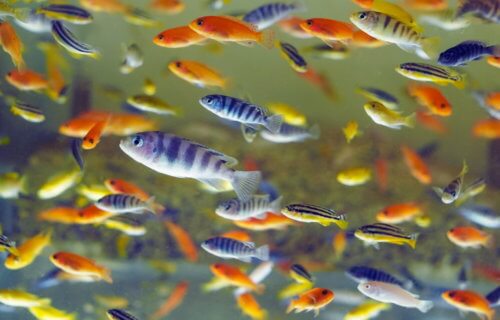BERN, Switzerland — Some fish apparently use the other end of their bodies to communicate with one another, a Swiss study finds.
The research was carried out by a team of three researchers from the University of Bern in Switzerland and published in the journal of Behavioral Ecology and Sociobiology.
The researchers staged scenarios and observed the interactions between cichlids, a type of fish. Some interactions included transparent physical barriers in the fish tank. Other scenarios incorporated barriers with either holes or opaque coloring. This allowed the researchers to analyze the different sensory exchanges between the fish.
“Animals use different sensory modalities involving visual, acoustical and chemical cues. While visual and acoustic communication used in aggressive encounters has been studied extensively in a wide range of taxa, the role of chemical communication received less attention,” the authors wrote in the research report.
The team selected different sizes of fish to determine if it was a variable in aggressive nature. The amount of urine was tracked by injecting the fish with blue dye.
The species of fish that was used is known in the science community as the cichlid Neolamprologus pulcher. The N. pulcher species of fish is more commonly referred to as the “daffodil” cichlid. This specific species of fish is endemic to Lake Tanganyika located in Africa, which is regarded to be the second largest freshwater lake in the world.
Several previous studies by various universities have revealed that urine is often used as means of communication throughout different animals. So, the researchers figured it was only logical that fish may use a similar communication system.
The research suggested that fish emit far more urine when they can fully encounter one another without barriers of any kind. Similarly, they emitted more urine when they could see one another through a solid transparent barrier. However, when urine was exchanged through a barrier with holes, smaller fish had a tendency emit less urine while reducing aggressive behavior.
